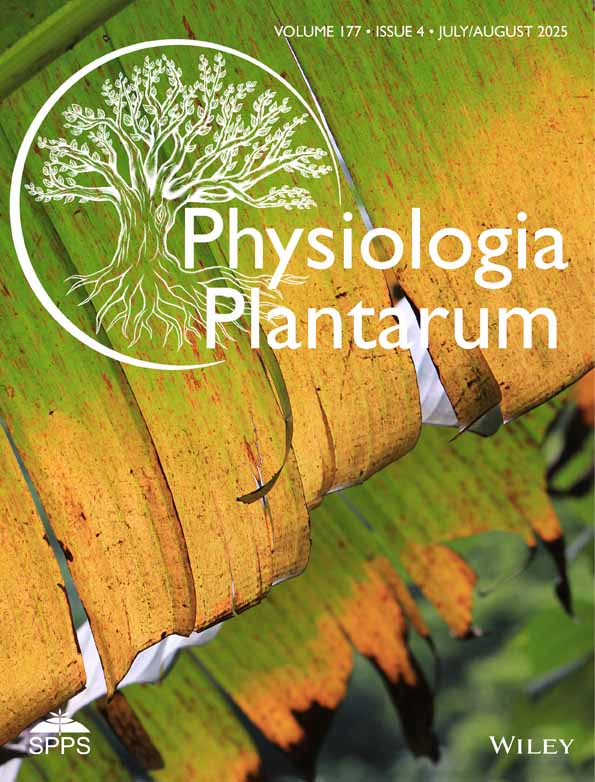The interaction of high temperature and elevated CO2 on photosynthetic acclimation of single leaves of rice in situ
Abstract
Rice (Oryza sativa L. cv. IR72) was grown at three different CO2 concentrations (ambient, ambient + 200 μmol mol−1, ambient + 300 μmol mol−1) at two different growth temperatures (ambient, ambient + 4°C) from sowing to maturity to determine longterm photosynthetic acclimation to elevated CO2 with and without increasing temperature. Single leaves of rice showed a cooperative enhancement of photosynthetic rate with elevated CO2 and temperature during tillering, relative to the elevated CO2 condition alone. However, after flowering, the degree of photosynthetic stimulation by elevated CO2 was reduced for the ambient + 4°C treatment. This increasing insensitivity to CO2 appeared to be accompanied by a reduction in ribulose-1.5-bisphosphate carboxylase/oxygenase (Rubisco) activity and/or concentration as evidenced by the reduction in the assimilation (A) to internal CO2 (C1) response curve. The reproductive response (e.g. percent filled grains, panicle weight) was reduced at the higher growth temperature and presumably reflects a greater increase in floral sterility. Results indicate that while CO2 and temperature could act synergistically at the biochemical level, the direct effect of temperature on floral development with a subsequent reduction in carbon utilization may change sink strength so as to limit photosynthetic stimulation by elevated CO2 concentration.
Abbreviations
-
- A
-
- CO2 assimilation
-
- A/Ci
-
- the response of CO2 assimilation as a function of internal CO2
-
- Ca
-
- external CO2 concentration
-
- Ci
-
- intercellular CO2 concentration
-
- DAS
-
- days after sowing
-
- GLA
-
- green leaf area
-
- Rubisco
-
- ribulose-1,5-bis-phosphate carboxylase/oxygenase
-
- SLW
-
- specific leaf weight




